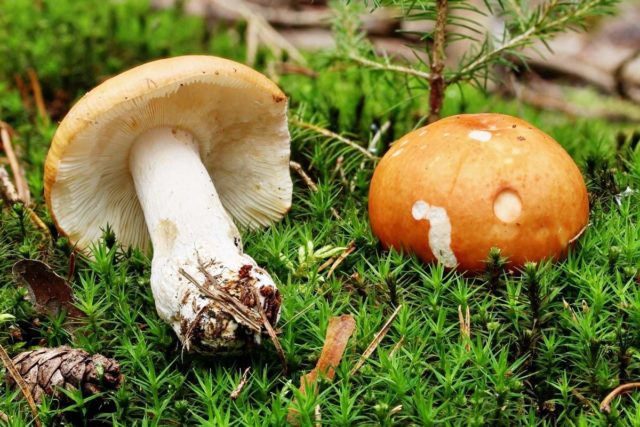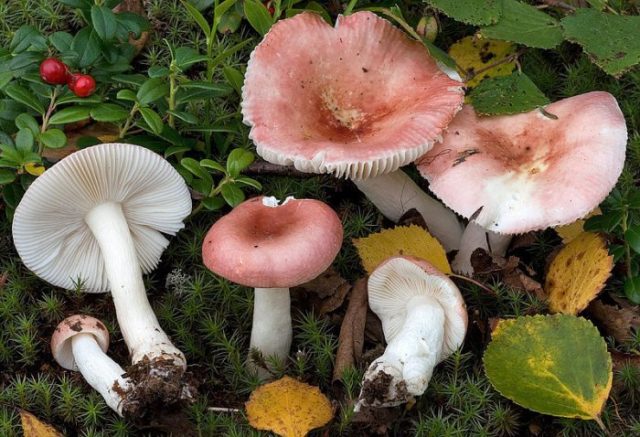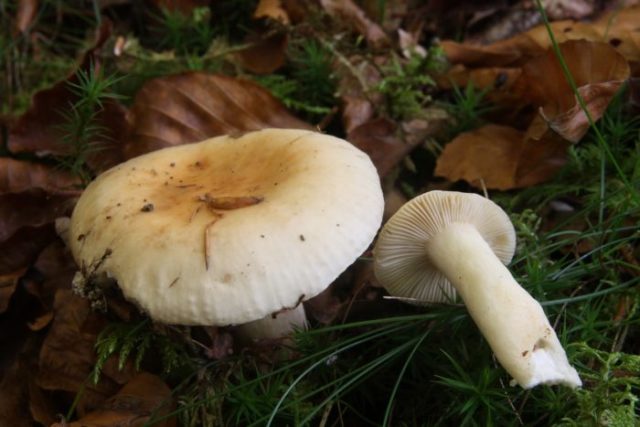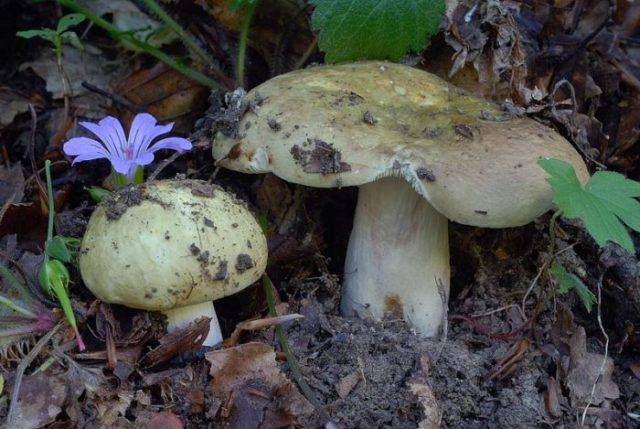Content
The gray russula belongs to the lamellar mushrooms of the russula family. It is believed that this genus is the most diverse and numerous in the territory of the Russian Federation. Of all the mushrooms in the forests, their number is 30-45%. The name usually comes from the color of the caps. There are edible and inedible species.
Where gray russules grow
The graying russula is popular in European countries, since the mushroom has practically no twins, it is difficult to confuse it with other varieties. Grows in moist, coniferous thickets. It is often found in the vicinity of a pine tree. It also prefers deciduous forests and associates with alder and birch. A graying russula grows in blueberries, moss thickets.
What graying russules look like
It is a rare lamellar mushroom. The hat is up to 15 cm in diameter. First, a hemispherical shape is noted, which eventually takes on a slightly depressed appearance. The color of the young skin is brown, brick, red-orange, depending on the place of germination. Gradually, the color changes, the hat at the end of the season becomes a dirty gray shade.
The russules that have just appeared have a sticky film, the edges are smooth. In older specimens, the surface becomes smooth, even, dry, matte. The edging becomes ribbed. The skin is easily removed from only ½ of the cap. The pulp is firm.
The leg is solid, solid inside. The surface is wrinkled, strong. It resembles a cylinder in shape. The color is white or gray. The height of the lower part of the mushroom is 5-10 cm. The flesh of the leg is loose. When pressed or dried, it turns gray, and then turns black.
The plates are wide, but thin. They adhere tightly to the cap. In the first days, the color of the plates is white, gradually fading, becoming gray.
Is it possible to eat gray russula
It belongs to the third category of edible mushrooms. Young hats are used for food. They can be fried, boiled, canned, and salted.
Mushroom taste
There is no doubt about the edibility of russula. Another thing is important - the presence of bitterness in the taste. Some mushroom pickers recommend trying them right in the forest, chewing on a small piece of the cap. It is believed that if the color of the mushroom is less red and burgundy, then it is more delicious.
The gray russula is a good addition to boletus boletus, boletus boletus, boletus. As they will absorb excess moisture and remain crispy. When salted, mushrooms quickly absorb salt. After a day, they become suitable for consumption.
Benefits and harm to the body
Nutritional value of gray russula - 19 kcal. Nutritious product, it contains:
- vitamins E, PP, group B;
- ascorbic, nicotinic acid;
- minerals: magnesium, iron, phosphorus, calcium, potassium, sodium, magnesium;
- mono- and disaccharides.
Due to the concentration of important elements, mushrooms have beneficial properties.
- Good prevention of gastrointestinal diseases.
- They have a positive effect on the state of the circulatory system. Thinning blood, preventing the formation of blood clots.
- For the full functioning of the cardiovascular system, a fermented milk product is used. It is obtained by acidifying milk with a mushroom.
- Graying russula are included in the diet for those who are losing weight. The product helps to reduce weight, fight obesity. This is possible due to the feeling of fullness and prolonged lack of appetite.
- Lecithin prevents the formation of cholesterol in the body.
Despite all of the above positive qualities, gray russules can harm a person. They are not advised to be used by people with chronic liver and kidney diseases. In the presence of allergic diseases or intolerance to certain macronutrients. Do not eat mushrooms for children under 12 years old, as well as for pregnant and lactating women.
False doubles
It should be noted right away that there are no poisonous russules in the direct sense. The category of inedible mushrooms includes specimens that have a pungent, bitter taste. Among them there may be toxic and slightly poisonous varieties. Similar external signs indicate the presence of false brothers.
- Russula watery... The cap is spherical, up to 5 cm in diameter. The skin is sticky and can be removed easily. The color of the surface of the mushroom is red-purple. Leg thickness 1 cm, height 5 cm. It is thicker at the bottom. The pulp is watery, fragile, white. The smell is rare.
- Birch russula... The upper part is up to 5 cm in diameter. The structure of the pulp is brittle, fleshy. Ribbed edge. Surface color is bright red, pale pink. It all depends on the place of growth. The peel is easy to peel. The leg is white, sometimes a yellow tint is visible. Its surface is wrinkled, thickens downward. The flesh of the mushroom tastes bitter. There is no smell. Often found in spruce and birch forests.
- Russula bilious... The shape of the cap is convex. Size 5-10 cm. Over time, it thickens, a small tubercle appears in the center. The color is beige or light yellow. The skin is sticky, peels off along the contour. The white pulp has a geranium odor and a bitter taste.
- Olive russula... The mushroom is large in size. The upper part has a diameter of 10-30 cm. Thomas can be spherical or flat. The surface is dry, even and smooth. The leg grows up to 18 cm in height. Cylindrical shape, white color, thickness 2-6 cm.
Collection rules
Mushrooms appear between June and October. Collect them in baskets or buckets. The plates are quite brittle, crumble, so mushroom pickers are not advised to carry them in bags.
Fresh graying russula can be stored for no more than two days without pretreatment. Necessarily in the refrigerator. Longer storage methods include pickling, salting. Canned mushrooms last for about 1 year in a jar. Thanks to drying, russula do not lose nutritional and taste qualities for 2 years.
Preparation
The use of graying russula in cooking is quite diverse. They can be eaten fried, salted, boiled, meanwhile, they are not suitable for making soups.
The heat treatment rules for all subspecies of russula are the same: first, soak in cold water for a couple of hours, then boil for 10 minutes to eliminate bitterness in the pulp. After that, you can proceed to frying the mushrooms.
An unusual recipe for gray russula chops.
- Separate the top from the bottom.
- Clean and rinse the hats.
- Soak in salted water.
- Pat dry with a paper towel.
- Dip each mushroom in batter, and then roll in breadcrumbs.
- Pour vegetable oil into a preheated pan, and lower the caps there.
- Fry over low heat for 15 minutes.
Can be served as a stand-alone dish or with a side dish. For a richer taste, it is advised to pour with sour cream and garlic sauce.
Conclusion
Gray russula is a rare mushroom that is not only tasty, but also healthy.Prefers to grow in pine, deciduous forests. Has no twins. However, inexperienced mushroom pickers may confuse this species with false brethren. When collecting mushrooms, you must carefully examine the find. Otherwise, by eating an inedible specimen, you can provoke a disruption of the gastrointestinal tract.














